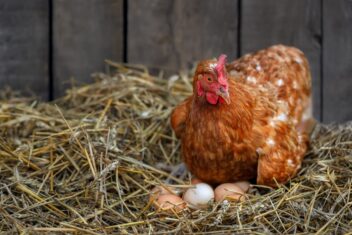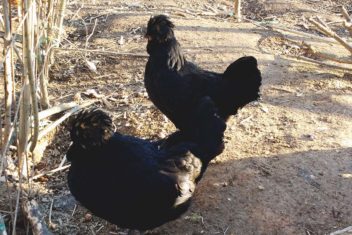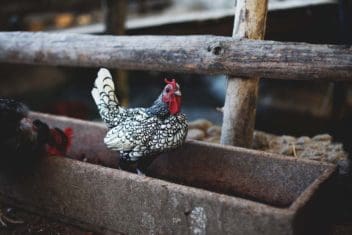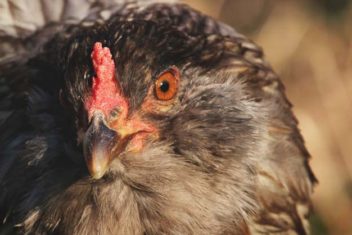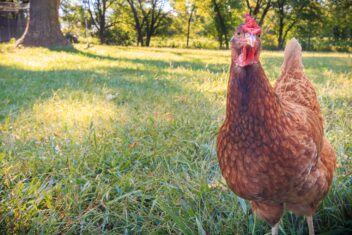When you’re buying or building a chicken coop, there are so many factors that you need to take into account.
Where will you put the coop? Will you use sand or shavings as bedding? How many chickens will you be able to put inside?
One question that so many people fail to ask themselves is this – how much ventilation does the chicken coop need?
Ventilation is a crucial feature of a chicken coop, barn, or any other facility used to house animals.
You can always “fake it till you make it.”
However, taking advantage of things like fans to improve ventilation in an existing building, ventilation is important to prevent a variety of diseases and conditions in your flock.
Here’s some information that should prove valuable if you are curious about how to improve ventilation in your chicken coop.
Benefits of a Ventilated Chicken Coop
There are several benefits of a ventilated chicken coop – but these should be viewed more as necessities than benefits. You can’t go without them!
The most important reason to ensure that your coop is well-ventilated is that high levels of humidity make chickens more likely to suffer from various respiratory diseases and frostbite.
Breathing problems can occur both in warm weather and in cold. Adding ventilation is important regardless of where you live or the time of year.
Adding more ventilation to the coop helps remove humidity and moisture from the coop. This makes it far easier for them to breathe.
If you’ve ever gone outside on a day with 75% humidity in the air, you know how difficult it is to breathe normally in the humidity. Don’t do this to your chickens – upgrade the ventilation for them!
How Much Ventilation Does a Chicken Coop Need?
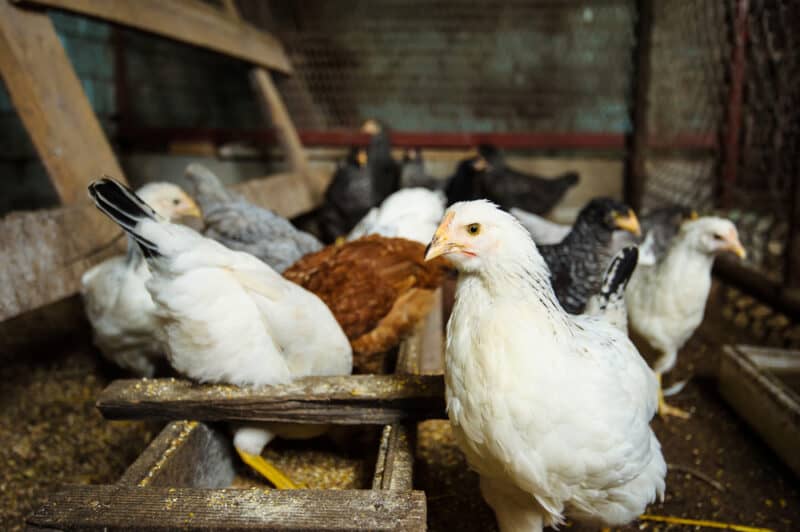
Several different variables affect how much ventilation is necessary for a chicken coop.
However, you can usually estimate that a coop needs about 3-4-square-feet of ventilation in the winter months. This can include things like pop doors, windows, vents, or man-sized doors.
In warm weather, even more ventilation is necessary to prevent the coop from overheating and becoming stuffy.
However, if you live in a cold climate, creating more ventilation in the winter requires you to strike a difficult balance. You need to be able to create ventilation without creating dangerous drafts.
Therefore, your goal when adding ventilation to the coop should be to add as much ventilation as possible without introducing harmful drafts.
Drafts aren’t bad in the summer – you will only have to open as many windows as you can! It is in the winter that you have to watch out for drafts, so it’s smart to ensure that your coop has vents and windows that can open and close as needed.
Here are a few more variables to consider:
- Humidity – the more humid it is, the more ventilation you will need, since it makes it more difficult to cool down in the heat or stay dry in the cold
- Chickens per square foot – the more chickens you have, the more ventilation you need
- Breed type – large chicken breeds need more ventilation than small breeds (they’re breathing, pooping, eating, etc more), as do breeds that don’t do well in the heat
- Time of year – the weather is the largest indicator of how much ventilation a coop needs (more in the summer, less in the winter) but don’t forget that your coop needs ventilation year-round.
Tips for Adding More Ventilation to an Existing Chicken Coop
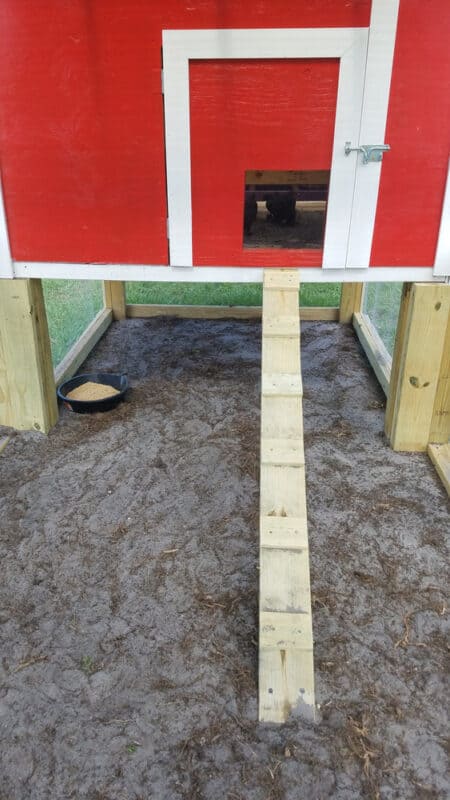
While it’s easiest just to invest in or build a chicken coop that has great ventilation from the start, these tips will help you modify or quickly upgrade your coop to improve its ventilation in a hurry.
1. Reconsider the Bedding Type
This is a very simple way you can improve moisture levels in your coop.
If you use organic bedding – which is generally recommended for most backyard flocks – you will need more ventilation.
There are countless benefits associated with using organic bedding like wood shavings and straw, but sadly, it doesn’t remove moisture as well as sand does.
It also makes it easier for pathogens to enter and break down, meaning not only is more moisture trapped in the air, but so too are odors, pathogens, and potentially harmful gases.
If you’re concerned about ventilation and can’t initiate any of the other upgrades mentioned below in this list, a quick fix is to switch to sand bedding. It won’t support pathogenic growth and will dry up the chicken poop more quickly.
You can also just consider cleaning the coop more often.
The deep litter method is a wonderful way to keep your chicken coop clean and warm without relying on too much manual labor. However, the more often you change the bedding, the more often you’re removing moist droppings from the coop.
2. Can You Use Droppings Boards?
Another quick fix for adding ventilation is to put droppings boards in the coop.
Droppings boards are pieces of material (such as plywood) that can be placed beneath the roosting bars to catch any droppings.
These don’t reduce how much manure is produced. However, they make it far easier to clean without having to replace all of the bedding.
You can even fill trays with kitty litter or sand and place them beneath the roosting bars. This quick fix will remove lots of moisture from your coop!
3. Try an Open-Wall Coop
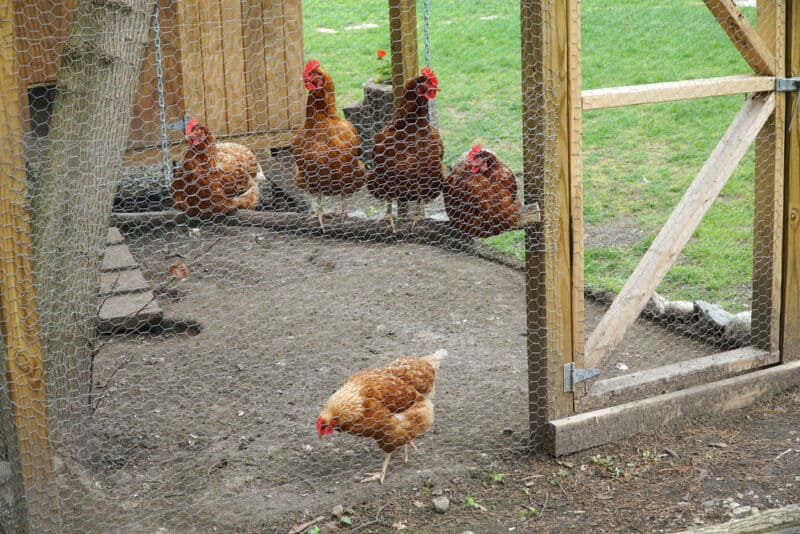
This fix won’t work for chicken keepers in colder climates. However, if you live in the tropics, consider building an open-wall coop.
The more airflow you have, the cooler and less humid your coop will be.
In this system, most of the walls or all of the walls will be made of hardware cloth. Your chickens will still be protected from predators but they’ll be much more comfortable in hot, humid weather.
4. Add Some Fans
Consider adding a few barn fans to the chicken coop. This will help cool off your chickens and get the airflow moving inside the coop. Just make sure you use barn fans and not household fans, which can overheat and malfunction in all the dust.
5. Improve Insulation
Insulation can be life-changing when it comes to keeping the coop cool in the summer and warm in the winter.
While many people think insulation is contradictory to ventilation, the reality is that both are necessary.
Make sure your coop is well-insulated. This will allow you to improve ventilation in the winter without necessarily introducing drafts.
6. Adjust Ceiling Height
If you’re just building or buying your chicken coop now and are looking for preventative ventilation tips, here’s a great one.
Rethink the ceiling height.
The higher the ceiling is in your coop, the less moisture will be concentrated directly above your chickens. Instead, the moisture will rise, and if you have vents in your coop, it will be able to escape.
If your ceiling is low, you can still use vents. The higher the ceiling, though, the better.
7. Add a Run or Allow Free Ranging
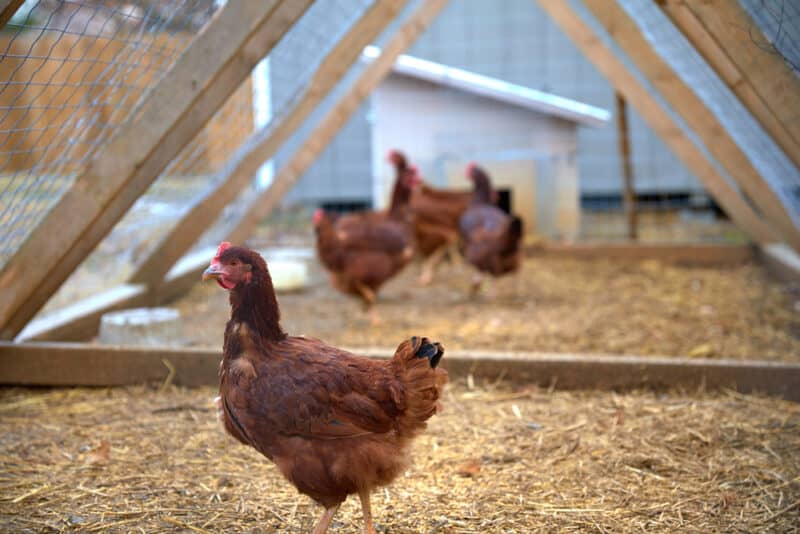
It’s not a great idea to leave your chickens cooped up all the time.
However, if you’re not allowing your chickens to get outside, you’re doing them a disservice in the ventilation department, too.
Consider adding a run to the coop or allowing them to free-range, if you’re able.
This will lead to less manure in the coop (so less moisture build-up) and the girls will be able to get some fresh air into their lungs, too. It’s a double whammy!
8. Rely on Vents in the Winter
Vents are helpful in the winter, especially if they’re positioned far above the heads of your chickens. This will allow warm, moist air to depart and cool, dry air to enter. Just make sure they aren’t positioned at the same level as your chickens when they’re roosting. This can lead to drafts and frostbite.
9. Aim for Cross-Ventilation
A screen door can help add some cross-ventilation to a coop. This is super important when you consider ventilation overall.
Just make sure it’s securely latched and covered with a predator-resistant material, like hardware cloth.
Another way you can improve cross-ventilation is to simply leave your pop door open during the day. This will allow fresh air to come in through while stale air can leave through the vents near the roof.
If that’s not an option, even something as simple as vents that are in different vertical locations should help.
How Do I Know if My Chicken Coop Has Adequate Ventilation?
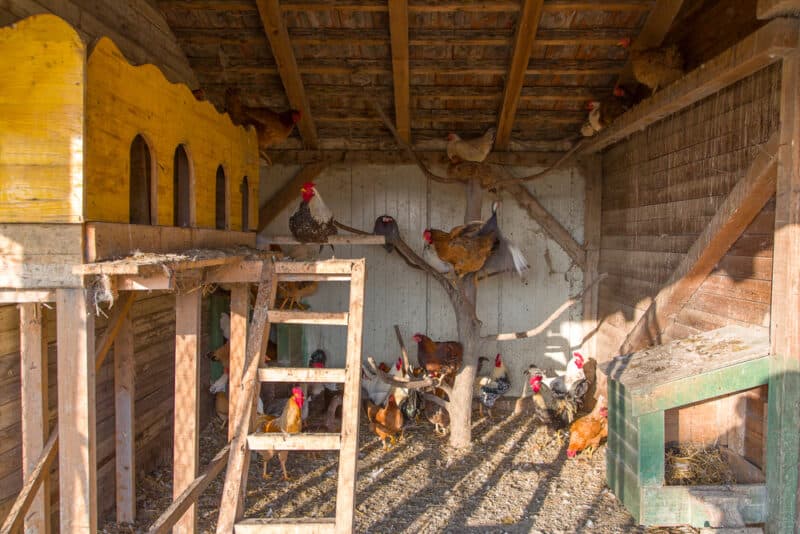
So how can you tell if your chicken coop has enough ventilation?
There are a few simple signs to look for.
The most telling sign that your coop is lacking in the ventilation department is if there’s condensation. If you see condensation on the roof, it might not necessarily mean the whole coop needs better ventilation. It could just mean the roof needs insulation.
However, if you see condensation indoors, such as on the window panes, then that’s a telling sign that more ventilation is necessary.
If you notice moist spots in the coop that can’t be explained by leaky waterers or anything else, that’s another sign.
Another indicator of poor ventilation is stinkiness despite being regularly cleaned. If your coop always smells like manure even though you’re vigilant about cleaning it, it could be time to upgrade your ventilation.
As you can see from the tips above, adding more ventilation doesn’t have to be a daunting task. Follow these tips to set yourself – and your flock! – up for success.


